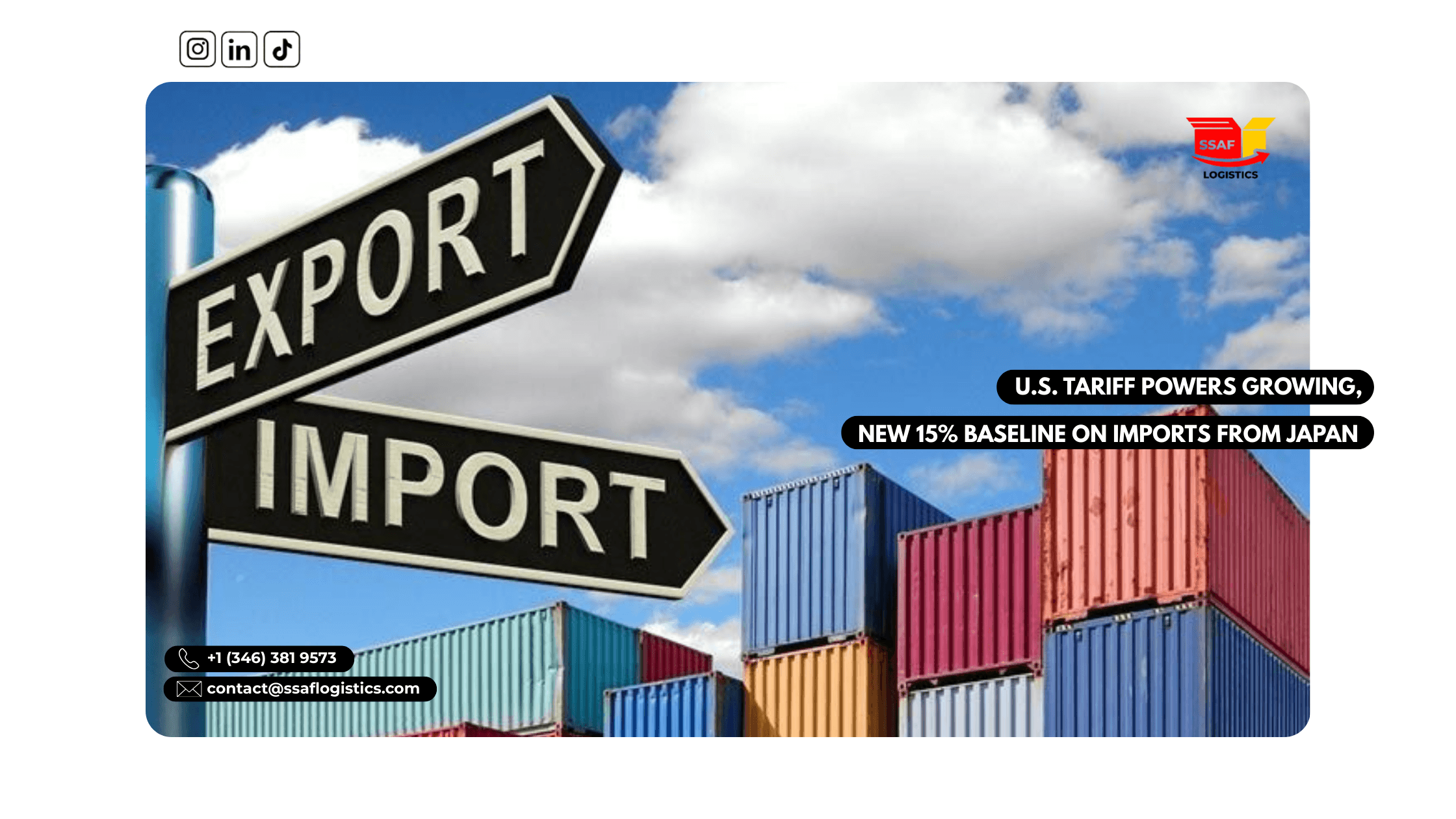Industry News • 23 Sep, 2025 • 2 min read
U.S. Tariff Powers Growing, New 15% Baseline on Imports from Japan

By Andrea Davila
The Trump administration has announced a new trade agreement with Japan that significantly reshapes tariff policy between the two nations. Through an executive order, the U.S. is introducing a 15% baseline tariff on nearly all Japanese imports. This move marks one of the largest tariff shifts in recent years and is intended to strengthen domestic manufacturing while addressing long-standing trade imbalances.
Under the new framework, any product currently facing tariffs below 15% will see an increase to meet the new minimum rate. Meanwhile, goods already taxed at 15% or more will not be subject to further hikes. The administration argues that this baseline ensures fairer competition for American industries competing with lower-cost imports.
Not all sectors will be treated the same, however. Strategic industries such as automobiles, auto parts, aerospace, generic pharmaceuticals, and certain natural resources are expected to receive special consideration. These carve-outs reflect industries viewed as critical to U.S. national security and economic resilience.
In exchange, Japan has pledged to expand its economic footprint in the United States. The agreement includes commitments to invest in U.S. industries and open more opportunities for American agricultural, industrial, and manufacturing exports. Supporters of the deal highlight this as a “two-way street” that will provide tangible benefits for both nations.
The impact of the new tariff structure will ripple across multiple industries. Japanese exporters will likely face higher costs of doing business in the U.S., and those costs could ultimately be passed along to American consumers. On the other hand, U.S. manufacturers and farmers may find themselves in a stronger position to compete both domestically and abroad.
While critics warn of potential price hikes and supply chain disruptions, the administration maintains that the agreement is a strategic step toward protecting American jobs and industries. How the new tariffs will affect trade flows—and whether Japan’s increased investment offsets the added costs—remains to be seen.
Related Blog Posts

![[object Object]](/_next/image?url=https%3A%2F%2Fcdn.sanity.io%2Fimages%2Fj6rggeis%2Fproduction%2Fadc720354d91283f487d5edc2816965a0ad6bf93-2240x1260.png&w=3840&q=75)
![[object Object]](/_next/image?url=https%3A%2F%2Fcdn.sanity.io%2Fimages%2Fj6rggeis%2Fproduction%2F1b461a54d3a1085cbd6ba571e806eb004fa00c6e-2240x1260.png&w=3840&q=75)
![[object Object]](/_next/image?url=https%3A%2F%2Fcdn.sanity.io%2Fimages%2Fj6rggeis%2Fproduction%2F06b53b6819032e45310238fa8e64d64174e6795f-2240x1260.png&w=3840&q=75)
![[object Object]](/_next/image?url=https%3A%2F%2Fcdn.sanity.io%2Fimages%2Fj6rggeis%2Fproduction%2F3b9561b340b9b4fa79ce675d52de305ea7ae475f-2240x1260.jpg&w=3840&q=75)